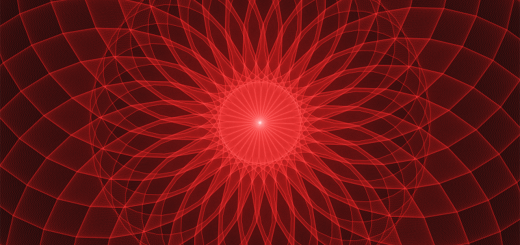Bagua Map Basics: Feng Shui Simplified

Before diving in, please note: This post is for informational purposes only. If you’d like to know more about how we approach topics, feel free to check out our friendly Disclaimer Page.
Hey there, amazing readers! 🖐️ Just a quick note: yes, we know there are a lot of ads here. Trust us, we get it—it’s not the prettiest look, but they help us keep this blog alive and kicking. Those pesky little ads cover the costs of all the behind-the-scenes magic, from hosting and tech stuff to creating content we hope you’ll love.
We’re committed to delivering quality posts, and your support (even just sticking around despite the ads) means everything to us. So, bear with us, and thanks for helping us keep the good vibes rolling. Now, on to the fun stuff! 😉
TRANSLATE BUTTON AT THE END OF THE ARTICLE
A Quick Overview
Feng Shui, a practice that harmonizes your living or working space with its surroundings, can seem complex at first glance.
However, the Bagua Map simplifies this ancient art into manageable segments.
Picture it as a blueprint for your space, designed to enhance your life by aligning energies.
In this article, we’ll unpack Bagua Map basics—its history, structure, and how to use it effectively in your life.
Prepare to transform your space and, potentially, your life!
Understanding Bagua Map: An Introduction to Feng Shui
The Bagua Map is a fundamental tool in Feng Shui.
It serves as a grid that helps you assess and cultivate energy in different parts of your home or office.
By mapping out specific areas of your space, you can pinpoint where improvements can be made to boost aspects of your life, such as wealth, relationships, and health.
Think of Bagua as a treasure map, leading you to the hidden gems of your environment.
Each section corresponds to a different life area, such as career, family, and creativity.
By working with these areas, you can bring balance and positivity into your daily life.
So, how do we go about using this map?
We start by overlaying it on the layout of our space.
It’s like placing a giant sticker on your floor plan, where each section corresponds to a specific life aspect.
By doing this, we can understand where to focus our energy and efforts to create a harmonious environment.
Don’t worry if you’re new to Feng Shui.
Using a Bagua Map is straightforward and can be a fun journey of discovery.
I remember when I first tried it; I felt a mix of excitement and nervousness.
Yet, as I began to see the changes in my space and mood, I became a firm believer.
The Origins of Bagua: A Journey Through History
The concept of Bagua has roots in ancient Chinese philosophy.
It’s tied to Taoism and the I Ching, an ancient text that reflects on change and duality.
The Bagua itself translates to "eight symbols" in Chinese, representing the eight trigrams found in the I Ching.
Historically, Feng Shui was used to select auspicious locations for homes and graves.
Ancient practitioners would analyze the landscape, ensuring buildings were positioned to harness beneficial energies.
Over time, the Bagua Map evolved into a more structured approach, allowing individuals to modify spaces for better energy flow.
As the centuries passed, Feng Shui spread throughout Asia and eventually became popular in the West.
Today, the Bagua Map is a widely recognized tool, embraced by those seeking balance in their lives and environments.
It transcends mere decoration; it’s about creating a space that feels good and functions well.
Understanding this history adds depth to the practice.
It’s not just a trend; it’s a time-honored tradition that encourages us to reflect on our surroundings and how they affect us.
When I learned about the Bagua’s historical significance, I felt more connected to the practice and its purpose.
What is a Bagua Map? Key Concepts Explained Simply
At its core, a Bagua Map is a grid overlay that divides your space into nine sections, each representing a different aspect of life.
These sections help us identify areas that might need attention or enhancement.
Here’s a simple breakdown of the sections:
Wealth & Prosperity: Focuses on financial abundance and opportunities.
Fame & Reputation: Relates to how others perceive you and your accomplishments.
Love & Relationships: Centers on romantic and platonic relationships.
Family & Health: Addresses family dynamics and physical well-being.
Center: Represents overall balance and harmony in your life.
Creativity & Children: Encourages artistic expression and nurturing.
Knowledge & Wisdom: Pertains to learning and personal growth.
Career & Life Path: Connects you with your professional journey.
Helpful People & Travel: Focuses on connections and support systems.
When I first saw the Bagua, I was amazed by how each section resonated with my life.
I realized that some areas felt stagnant while others flourished.
By using the map, I could strategically enhance weaker areas.
Creating and using a Bagua Map serves as both a practical guide and a reflective exercise.
It nudges you to think about what you desire in life and how your environment can support those goals.
The Nine Life Areas: Exploring Bagua’s Divisions
Each section of the Bagua Map corresponds to specific elements of our lives.
Let’s take a deeper look at these nine life areas and what they represent:
Wealth & Prosperity: Located in the far-left corner of the map, this area is all about financial growth.
Introducing elements like plants or crystals can elevate this energy.
Fame & Reputation: Found at the center of the back wall, focusing on this area can enhance your public image.
Artwork and light can amplify its energy.
Love & Relationships: This area, located in the far-right corner, emphasizes connections.
A pair of objects can symbolize love.
Family & Health: Positioned on the left side of the center, this area connects to lineage and well-being.
Incorporating family photos or green plants fosters nurturing energy.
Center: The heart of the map, it symbolizes balance.
Keeping this area clean and open encourages harmony throughout your space.
Creativity & Children: Located in the far-right section, this area fosters inspiration.
Colorful decor can stimulate creativity.
Knowledge & Wisdom: The left section of the center, this area is about learning.
Books and items that inspire learning can enhance its energy.
Career & Life Path: Positioned in the middle of the bottom row, this area relates to professional life.
Adding water elements can invigorate career opportunities.
Helpful People & Travel: Located at the far left corner, focusing on this area can attract supportive relationships and travel opportunities.
Keep this area bright and welcoming.
Understanding these divisions can lead to meaningful changes in your life.
I remember adjusting my home office according to the Bagua, and it felt like a breath of fresh air.
How to Create Your Own Bagua Map at Home
Creating a Bagua Map for your space entails a few simple steps.
Here’s how to do it:
Draw a Layout: Start by sketching the floor plan of your home or room.
Include doors and windows for context.
Overlay the Bagua Grid: Divide your sketch into nine equal sections, like a tic-tac-toe board.
The bottom row represents your career and helpful people, while the top row covers wealth and fame.
Align the Map: Position your Bagua Map so that the bottom row aligns with the entrance of your space.
The center of the grid should represent the heart of your home.
Identify Each Area: Label each section based on the life areas we previously discussed.
Be sure to take note of which sections correspond to your home.
Assess Your Space: Take a look at what’s currently in each area.
Are there any cluttered spaces?
Are there items that bring joy or energy?
Plan for Enhancements: Based on your assessment, create a plan to enhance each life area.
This might include decluttering, rearranging furniture, or adding specific decor.
Implement Changes: Start making changes in one area at a time.
Remember, progress is key!
Evaluate and Adjust: Over time, assess how these changes affect your energy and mood.
Don’t hesitate to make further adjustments.
Enjoy the Process: Creating a Bagua Map shouldn’t feel like a chore.
It’s a journey!
Take the time to enjoy the transformation of your space.
When I was making my first Bagua Map, I felt a renewed sense of purpose.
It was like piecing together a puzzle that revealed a clearer picture of what I wanted my life to be.
Positioning Your Bagua Map: Tips for Success
Positioning your Bagua Map correctly is crucial for effective results.
Here are some tips to help you get it right:
Align with the Entrance: Always orient your Bagua Map so that the bottom of the grid aligns with the main entrance of your space.
This is where energy enters.
Use a Compass: If you’re feeling adventurous, use a compass to ensure your Bagua aligns correctly.
Knowing the direction can bring more clarity to your layout.
Be Mindful of Sections: Pay particular attention to the sections that align with important areas of your life.
Start Small: If you feel overwhelmed, begin with one room before tackling your entire home.
Consult Resources: Plenty of online resources offer templates and guides.
Don’t hesitate to explore them!
Trust Your Instincts: Sometimes the best adjustments come from following your gut.
If something feels off, change it!
Seek Feedback: If you’re comfortable, ask friends for their opinions on your changes.
They might see things you don’t!
Be Patient: Changes won’t happen overnight.
Allow time for the energy to shift.
Celebrate Your Progress: Acknowledge the changes, no matter how small.
Each step counts!
When I first aligned my Bagua Map, I was skeptical.
However, taking these steps made me feel more connected to my space.
Analyzing Your Space: Assessing Each Life Area
Once your Bagua Map is laid out, it’s time to analyze each life area.
This step is crucial for understanding what needs improvement.
Here’s how I approach it:
Walk Through Your Space: Take a leisurely walk through each section.
Notice how you feel in each area.
Identify Clutter: Look for items that don’t serve a purpose.
Clutter can block energy flow.
Notice Energy Flow: Pay attention to how energy moves in your space.
Is it inviting or stagnant?
Check Lighting: Bright spaces feel more open.
Dark areas can be dreary.
Evaluate Decor: Are there items that inspire or uplift you?
If not, consider changing them.
Listen to Your Feelings: If a space feels heavy or uncomfortable, take note.
These emotions offer insight.
Gather Input from Others: Sometimes, sharing your experiences can shed light on what you might miss.
Assess Functionality: Consider how you use each area.
Is it serving you well?
Create an Action Plan: Based on your analysis, write down what you’d like to change.
Reflect Regularly: Revisiting this process can help you stay aligned with your goals.
Analyzing my space was eye-opening.
I found areas that needed a little love, and the process became an act of self-care.
Enhancing Your Energy: Practical Feng Shui Tips
Now that you’ve assessed your space, let’s explore simple yet effective ways to enhance energy using Feng Shui principles:
Declutter: Clear out items you don’t use or love.
A clean space allows energy to flow freely.
Incorporate Plants: Introduce greenery to your space.
Plants purify the air and add life.
Use Mirrors Strategically: Mirrors can help expand a space and reflect light.
Place them thoughtfully for maximum effect.
Add Meaningful Artwork: Choose art that resonates with you.
Every piece should uplift you.
Incorporate Natural Light: Open those curtains!
Natural light boosts mood and energy.
Choose Soothing Colors: Color impacts mood.
Opt for colors that evoke feelings you want to cultivate.
Arrange Furniture for Flow: Ensure pathways are clear and furniture feels inviting.
Create Cozy Spaces: Designate areas for relaxation or reflection.
Comfort fuels positive energy.
Use Aromatherapy: Scents affect mood.
Experiment with essential oils or candles to enhance serenity.
Stay Consistent: Regularly revisit your space and make adjustments as necessary.
These tips helped me reshape my home into a sanctuary.
Each change felt like a tiny transformation, contributing to my overall well-being.
Common Bagua Map Mistakes to Avoid for Beginners
As you start your Feng Shui journey, here are some common pitfalls to steer clear of:
Ignoring the Entrance: The main entry is crucial.
Avoid clutter here to let positive energy flow in.
Overcomplicating the Process: Feng Shui doesn’t have to be intricate.
Keep it simple, especially in the beginning.
Forgetting to Personalize: While guidelines are there, make it your own!
Your space should reflect you.
Neglecting Maintenance: A clean and tidy space is essential.
Regular upkeep prevents stagnation.
Not Trusting Your Intuition: If something doesn’t feel right, trust that feeling.
Your instincts are valuable.
Rushing Changes: Allow time for shifts to occur.
Sometimes, energy takes a while to adjust.
Focusing Solely on Aesthetics: Feng Shui is about energy, not just looks.
Ensure each item serves a purpose.
Avoiding Experimentation: Don’t be afraid to try new things.
Adjustments can lead to delightful surprises!
Limiting Yourself to One Area: Engage with your entire space.
Every section influences the rest.
Neglecting the Emotional Aspect: Feng Shui involves both the physical and emotional.
Pay attention to how you feel in your space.
I’ve stumbled upon many of these mistakes myself.
Each misstep taught me valuable lessons that shaped my practice.
Real-Life Bagua Success Stories: Inspiration Awaits
Many people have experienced profound changes after applying the Bagua Map to their lives.
Here are a few heartwarming examples:
Career Change: A friend of mine felt stagnant in her job.
After organizing her Career area, she found the courage to pursue a new path, leading her to a position she loves.
Relationship Improvement: A couple I know struggled with communication.
By enhancing their Love area, they created a more inviting atmosphere, which sparked open conversations.
Boosting Creativity: An artist found inspiration waning.
By paying attention to her Creativity area, she updated her workspace, leading to a flow of fresh ideas.
Health Focus: A family member emphasized the Health area and found that decluttering their kitchen led to healthier eating habits.
Wealth Attraction: Someone I met incorporated water elements into their Wealth area.
They noticed unexpected financial opportunities arising shortly after.
These stories remind me of how connected our environments are to our lives.
Each small tweak can lead to surprising transformations.
Integrating Bagua with Other Feng Shui Practices
While Bagua is a powerful tool, integrating it with other Feng Shui practices can enhance results even further.
Here’s how you can do it:
Chi Energy: Focus on maintaining a high flow of chi, or life energy.
Open spaces and fresh air are essential.
Five Elements Theory: Incorporate wood, fire, earth, metal, and water into your design to create balance.
Each element corresponds to different feelings and areas of life.
Yin and Yang: Aim for a balance of yin (soft, passive) and yang (hard, active) energies in your space.
This balance fosters harmony.
Color Therapy: Use colors wisely based on the Bagua Map.
Colors influence mood and energy flow.
Seasonal Changes: Consider the seasons when adjusting your space.
Keeping your decor aligned with the season can support energy flow.
Sound and Vibration: Introduce sound elements like wind chimes or soft music to elevate your space’s energy.
Intentionality: Set clear intentions for what you want to achieve with your space.
Visualize these desires as you make adjustments.
Mindfulness: Practice mindfulness in your space.
Pay attention to how you feel in different areas, adjusting them as needed.
Community Support: Connect with other Feng Shui enthusiasts.
Sharing experiences can inspire new ideas.
By incorporating these practices, I’ve found my own Feng Shui journey enriched.
It’s like adding layers to a cake, each one making the experience sweeter.
Wrapping Up: Embrace Your Space with Bagua Magic!
The Bagua Map offers a delightful way to engage with your environment and create a space that feels good.
By understanding its history, learning about the nine life areas, and applying practical tips, you can enhance your life.
As you embark on this journey, remember that it’s about progress, not perfection.
Each change, no matter how small, adds up to create a more harmonious existence.
So, grab a sketch of your space, and let’s start mapping out your life!
You might be surprised by how invigorating and transformative this process can be.
Embrace the magic of Bagua and watch as your space reflects the life you desire.
Now go ahead, take that first step, and let your Bagua adventure begin!

The Enlightenment Journey is a remarkable collection of writings authored by a distinguished group of experts in the fields of spirituality, new age, and esoteric knowledge.
This anthology features a diverse assembly of well-experienced authors who bring their profound insights and credible perspectives to the forefront.
Each contributor possesses a wealth of knowledge and wisdom, making them authorities in their respective domains.
Together, they offer readers a transformative journey into the realms of spiritual growth, self-discovery, and esoteric enlightenment.
The Enlightenment Journey is a testament to the collective expertise of these luminaries, providing readers with a rich tapestry of ideas and information to illuminate their spiritual path.
Our Diverse Expertise 🌟
While our primary focus is on spirituality and esotericism, we are equally passionate about exploring a wide range of other topics and niches 🌍📚. Our experienced team is dedicated to delivering high-quality, informative content across various subjects ✨.
To ensure we provide the most accurate and valuable insights, we collaborate with trusted experts in their respective domains 🧑🏫👩🏫. This allows us to offer well-rounded perspectives and knowledge to our readers.
Our blog originally focused on spirituality and metaphysics, but we’ve since expanded to cover a wide range of niches. Don’t worry—we continue to publish a lot of articles on spirituality! Frequently visit our blog to explore our diverse content and stay tuned for more insightful reads.





